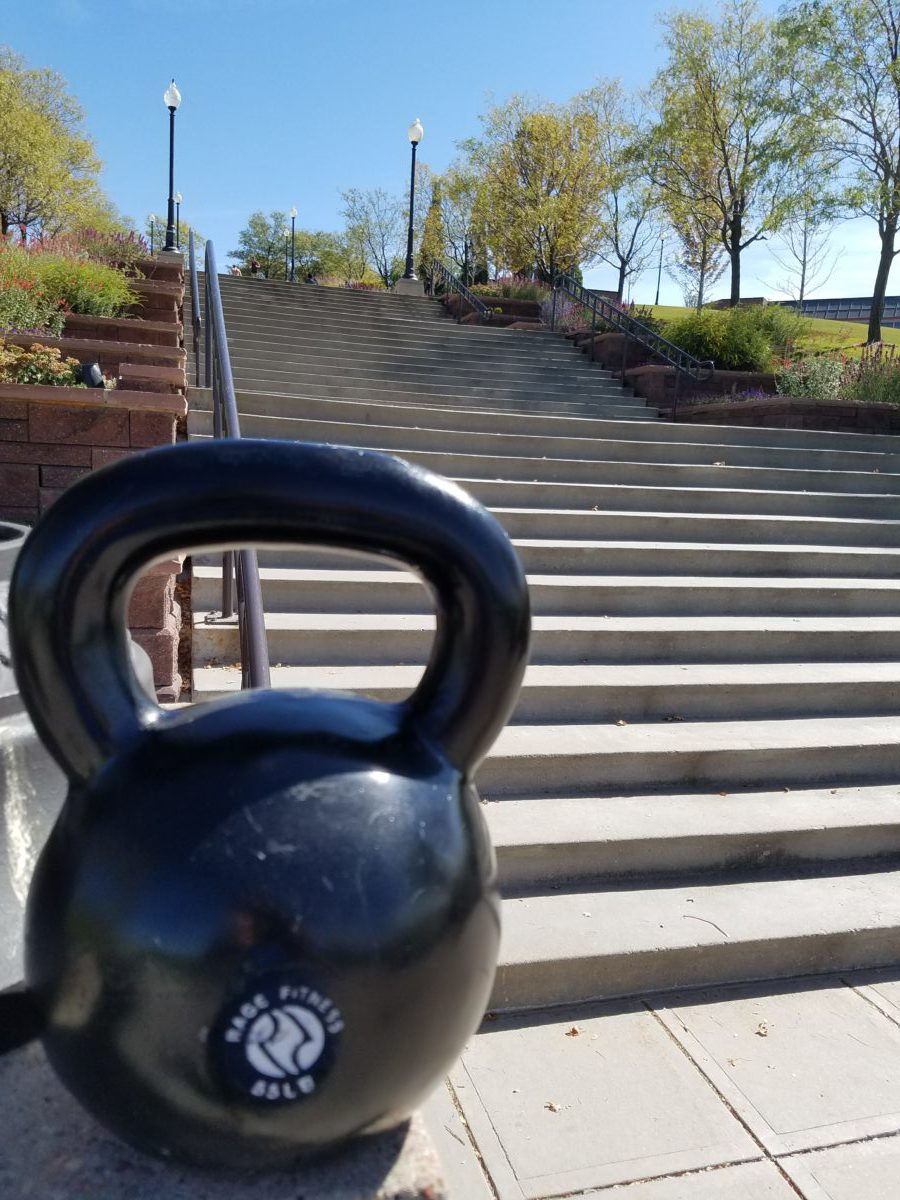Keith Code of the California Superbike school is famous for using his $10 analogy.
“You have $10, you can spend it on cornering or braking, or some combination of both, but you only have $10”
This very much applies to BJJ training and resource consumption*
There are many qualities that go into a BJJ player some of which are:
- Technique
- Strength
- Speed
- Mobility
- Sensitivity/Timing
- Endurace
- Efficiency
You can spend your $10 on improving any/all of the above….but you only have $10.*
How much BJJ training is ‘right’ in a given week, and how to maximize the $10?
You will need to assess this for yourself. When I started BJJ back in 05, having zero grappling experience, I knew I sucked, so I’d train hard five or six days a week.
I didn’t plan on training 5-6 times a week, I just got sucked into it.
What I noticed after a while was a sub-optimal repeating pattern. Early in the week, after a day or so off, I’d come in and do pretty well. The next day, I’d be excited at doing ok day one, then perform a bit worse.
Being frustrated at my decreased performance day two, I’d come in on day three and just suck. Even more frustrated I’d come in on day four and I’d generally be completely wrecked before slapping hands….but I can’t let this stop me, maybe if I come in on day five things will be better…..
They weren’t…ever…but hey, it’s open mat on Saturday….
How many days?
Depends on the types of classes and your ability to recover.
I’ve had weeks of technique-only classes where I could easily go to five or six and have plenty left in the tank for mobility and strength work.
The opposite is hard-sparring, heavy drill, king of the mat work, or extensive work with heavyweights. These types of workouts require recovery, and I find any more than three in a week leaves me fairly depleted.
How do I know if it’s been too much?
HRV Heart Rate Variability can be used to quantify overall fatigue but if you’ve been working out for a while, you probably know the wrung-out feeling in the am. If the first thing I think in the morning when the alarm goes off is “Ouch, everything hurts and feels dead tired” it’s a good sign I should take a day off. Tracking my HRV dovetails directly with my morning first-minute assessment.
Some of the signs of overtraining
Chronic soreness
Decreased immune system, or frequent colds
Decreased motivation
Decreased sleep quality
Decreased Heart Rate Variability(HRV)
Decreased concentration
“All you need is Jiu Jitsu” -> typically false
Why not BJJ 100% of the time?
Your body optimizes for what you tell it to do. Related, be careful what you’re telling it.
BJJ by itself, or any singular activity will strengthen certain parts of the body and ignore others. Over time these imbalances will lead to decreased performance and quite possibly injury. Article on muscle balance here.
BJJ is all pull, very little push. The typical BJJ player spends LOTS of time trying to strengthen their grip and pulling power with supplemental training….but BJJ has a lot of that already, so over time muscles and lose their ability to relax, and the imbalance can lead to permanently weakened grip.
Being ‘gripped out’…..I know this well.
Sport specific training observations
I go to a gym that has a lot of dedicated BJJ and Muay Thai practitioners. You can tell what a guy does by looking at their legs when they walk it. The BJJ guys are all hamstrings, no quads, and the Muay Thai guys are the opposite.
My entire pre-bjj life I’d been quite quad heavy in my quad/ham balance, but after several years of BJJ and not that much quad work in the gym, I started to have knee pain for the first time in my life. A doctor checked out my legs, and said:
“You are supposed to be about 60/40 quads to hamstrings by bulk……you are about 20/80, and that’s why your knees are hurting…”
After a handful of wake-n-work-the-quads sessions, my knee pain utterly disappeared. It was one of many lessons I’ve learned the hard way about balancing the body.
If you don’t yet believe me on a body’s ability to optimize, look at your friends who exclusively run, or bike. I have a competitive runner buddy who is permanently shaped in his ‘running form’ At age 50+ he can rattle off 6ish minute miles in marathon sized bunches, but has a hard time putting on his shoes.
Not just the muscles
When assessing how much of your $10 you’ve spent in a given week on training, don’t forget the central nervous system(CNS) load of what has been done already. Sprint training, plyometrics and explosive BJJ drills take a heavy toll on the CNS.
Looking back through my training logs, I notice a pattern where very intense exercise or training leaves the tank empty the next day.
A great conditioning routine I took from Dan John is the Litvinov sprint. Without fail when I do this workout the next day I roll like crap, feel weak, and my timing is horrible.
Litvinov sprints come in a few forms, but here was the flavor that blitzed me.
3 sets, about 3 minutes between sets:
30+ two handed kettlebell swings, drop the KB and sprint up a hill for the next 20-30 seconds at maximum speed.
This is AWESOME for physical conditioning, but it apparently charges $13-$14…If I do anything but very low intensity training the next day, I’m perform poorly.
If it’s so healthy, why can’t I stop coughing?
If I am to do Litvinov sprints, I need to schedule them before a rest or active recovery day.
Part of your $10 needs to go to body balancing and improving athletic qualities.
Take at least one day a week to throw in balancing and corrective exercises. Steve Maxwell has some excellent material on BJJ recovery. I purchased Steve’s BJJ for a lifetime video as well as his corrective and balancing follow-ons. I recommend them both.
Strength and Conditioning
A basic program 2-3 days a week is probably enough to effectively improve strength or conditioning and still allow good progression in BJJ. I’ll post other articles specifically on strength for BJJ in the future.
If the desire is to improve a quality(mobility/strength/endurance), focus on JUST that quality for a period of 6-8 weeks, then re-assess what needs the most work and go from there.
I have another article planned on block segmentation of training, but the gist is: You can’t get your body to improve in 5 directions at the same time.
Think bodybuilder vs marathon runner. If you split every other workout between them, you’ll end up neither.
Strength/conditioning: Less is more, fight the inner idiot’s desire to do more
When it comes to strength supplementation for BJJ, it is almost always better to do a bit less than a bit more.
To me, the sign of a really excellent routine is one which places great demands on the athlete, yet produces progressive long-term improvement without soreness, injury or the athlete ever feeling thoroughly depleted. Any fool can create a program that is so demanding that it would virtually kill the toughest marine or hardiest of elite athletes, but not any fool can create a tough program that produces progress without unnecessary pain —Easy Strength
It may be heresy in these days and times of more-is-more, one-more-rep and no gain no pain, but if your focus is BJJ and improvement in BJJ:
Save it for the mat, spend it on the mat…
Any outside work should improve your performance on the mat.
Don’t kill yourself to prove you can be the best at working out.
Know yourself, plan accordingly
My inner idiot is strong, really strong. It may be my day off, but if I have gym clothes in my trunk, at some point in the day I’ll start to reason that I can make it to the gym and just do a ‘light’ day…Then I’ll get to the gym, warmup, my creaky beaten up body will start working better and the next thing I know, I’ve blown my $10 on a day when I only had $4 left due to yesterday’s overspending.
Over time I’ve recognized that if I truly want a day off, I can’t put workout clothes in the trunk.
Remember, you only have $10. Spend it in the direction you want to go.
See you on the mat.
*Your body has the capacity to give you more than $10 in a given day, but averaged over the course of a month, you only get $10/day. If you spend too much, your body will start to break down, and overall performance will decrease. If you’ve ever done a grinder 2-3 hour BJJ workout, or a Crossfit ‘chipper’ and been sore and nearly disabled for a week, you have spent more than $10…the next day’s impairment is your body trying to recoup the costs. This is an evolutionary holdover. If we’re trying to keep the ship from sinking in a storm, or running away from a tiger, it makes sense to have a body that can wildly overextend itself to survive.


